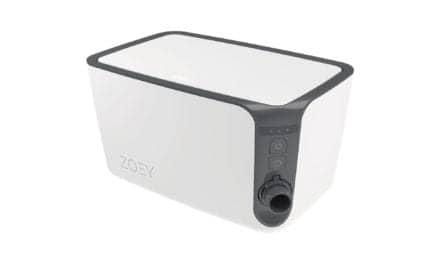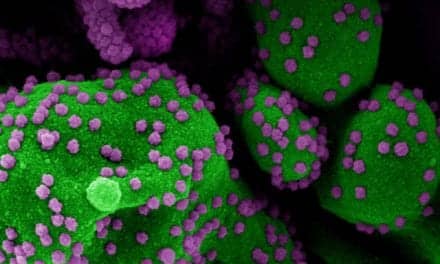Any facility that is performing overnight polysomnograms will likely have the equipment and staff with the technical skill to add the multiple sleep latency test.

The multiple sleep latency test (MSLT) is a series of four or five monitored naps. It is utilized to objectively quantify the degree of daytime sleepiness a patient may be experiencing and is the definitive test for narcolepsy. It may be used initially to evaluate daytime sleepiness as well as to determine the impact of therapy on daytime sleepiness.
A standardized protocol is in place for the MSLT. Any sleep laboratory routinely performing overnight polysomnograms will likely already have the resources in place to perform MSLT procedures.
Perhaps the most common error in the protocol is the use of a technologist who is not well rested. Since much of the testing is determined by the close observations of the technologist, it is critical that the technologist is well trained in sleep staging and polysomnography procedures and has had adequate sleep to remain alert and attentive throughout the day. Some sleep laboratories ask the technologist who ran the overnight test to remain for the MSLT. This requires the technologist to stay awake for up to 24 hours, which is far longer than would be expected if peak alertness is a requirement.
Preparing for an MSLT
The montage (combination of physiologic measures) for an MSLT includes central electroencephalogram (EEG), occipital EEG, left and right electro-oculogram (EOG), chin electromyogram (EMG), and electrocardiogram (ECG). Since rapid eye movement (REM) sleep is a critical measure, the addition of upper and lower EOG is recommended. It is optional to add oximetry, airflow detection, respiratory effort, and limb EMG. EEG electrodes are placed in accordance with the international 10-20 electrode placement system. EOG electrodes are placed 1 cm out and 1 cm up from the outer canthus of each eye with the upper and lower eye leads being placed directly above and below the eye. The chin EMG electrodes are placed approximately 2 cm apart over either the mentalis or submentalis muscle. ECG electrodes should be in a lead II position. A ground electrode should be used and may be placed anywhere on the head, but is generally either on the forehead or in the Cz EEG placement.
|
The Stanford Sleepiness Scale The scale consists of seven items. The patient chooses the number associated with a group of statements describing levels of sleepiness.
This scale works well with adults who have English as their primary language. |
The patient should discontinue any medication that would impact daytime sleepiness such as stimulants, hypnotics, and antidepressants for an adequate amount of time prior to testing to allow for elimination of these medications from the system. The ordering physician must evaluate the medical safety of discontinuing these agents. Sleep logs or diaries need to be completed by the patient for approximately 2 weeks prior to the test. These will allow evaluation of previous sleep deprivation in the findings. Since the testing should follow patients’ normal routine in terms of sleep patterns, the sleep logs also allow the interpreting physician to include patients’ routine when considering the test results. An MSLT should always follow an overnight polysomnogram. The overnight testing assists in eliminating the effects of any underlying sleep disorder such as sleep apnea or periodic limb movement disorder on daytime sleepiness. It will also document the objective amount of sleep prior to the test. A patient’s perception of sleep may be skewed, thus reducing the reliability of daytime sleepiness findings if the previous night’s sleep was insufficient. Drug screening (usually urine) is recommended to rule out any effects from medications or illicit drugs.
Following the overnight polysomnogram, the patient should change into street clothing. Prior to the first test, and in between subsequent naps, the patient may be allowed to do any normal activities except for consuming stimulants (caffeine; however, nicotine is acceptable) or sleeping. With sleepy patients, the most difficult task is often keeping them awake between naps.
Prior to each nap, the patient must discontinue smoking cigarettes for at least 30 minutes and must discontinue any vigorous activity for at least 15 minutes. Ten minutes prior to the nap, the patient is instructed to begin preparing for bed. This is the time that they should use the restroom if needed. They may wish to remove their shoes and get the bed prepared. Five minutes prior to the start of each nap, the patient will need to perform physiologic calibrations to determine adequate function of all electrodes. Physiologic calibrations are achieved by asking the patient to perform various maneuvers and observing the response on the polygraphic recording. These include:
• Eyes open—gives a reference point for the appearance of the EEG and EOG while the patient is awake with their eyes open.
• Eyes closed—gives a reference point for the appearance of the EEG and EOG while the patient is awake with their eyes closed. Alpha EEG rhythm generally is prominently seen during relaxed wakefulness, but is best seen with eyes closed. It will diminish or disappear when the patient falls asleep.
• Horizontal and vertical eye movements—gives a reference point for the appearance of the EOG with rapid eye movements. This is critical for evaluating the presence of REM sleep.
• Grit teeth—gives a reference point for the chin EMG during wakefulness and verifies the proper function of these electrodes.
Approximately 45 seconds prior to each nap, the patient should give a subjective measure of their perceived sleepiness. A common means of determining perceived sleepiness is the Stanford Sleepiness Scale.
Once the physiologic calibrations are completed, the patient is instructed to lie in bed quietly with their eyes closed and try to fall asleep. They will be awakened or notified by the technologist when the nap is completed. Following these instructions, the technologist will turn out the lights in the patient’s room and document “lights out” on the recording.
The first nap may begin anywhere between 90 and 180 minutes following the final awakening from the previous night. Subsequent naps should follow in 120-minute intervals from the beginning of the previous nap.
Scoring
Scoring of the naps is performed utilizing standardized epoch (page) scoring with each epoch generally being 30 seconds. Standardized sleep staging according to Rechtshaffen and Kales is utilized. Five naps are considered standard; however, the fifth nap may be eliminated if the first four naps contain two or more naps showing REM sleep onset or zero naps with REM onset.
The sleep onset, or lack of sleep onset, determines the duration of each nap. If there is no sleep, the nap is run for 20 minutes. If sleep occurs, the nap is run for 15 minutes following the first epoch of scorable sleep. Upon meeting the criterion for ending a nap, the technologist should awaken the patient and turn on the lights. The polygraph tracing should be documented with “lights on.” A subjective evaluation by the patient as to whether they slept and/or dreamt is often performed.
Once all naps are completed, the technologist removes all the electrodes from the patient and the testing is completed. The electrodes need to be cleaned and the final scoring report will be prepared for the interpreting physician.
The scoring of the MSLT includes the epoch-by-epoch assigning of sleep/wake stages. Calculation of mean sleep latency (time to sleep onset) for the entire group of four or five naps must be done. Sleep latency on each nap is determined by the time from lights out to the first epoch of scorable sleep. The mean sleep latency is a simple arithmetic average of the sleep latencies. This is calculated by adding all the sleep latencies and dividing by the number of naps. If the patient did not sleep on any given nap, that nap is assigned a sleep latency of 20 minutes (the predetermined duration of a nap with no observed sleep). Additionally, REM latency must be reported for each nap. REM latency is the elapsed time from sleep onset to the first epoch of REM.
In adults, a mean sleep latency of >10 minutes is considered abnormal. A mean sleep latency of >5 minutes is considered pathologically sleepy. Patients with narcolepsy generally have both pathologic sleepiness and at least two sleep onset REM periods.
Considerations
While the protocol for the MSLT is quite complete, there are some considerations that are not addressed. Each individual testing facility must make some determinations regarding these issues. If a patient has sleep apnea and is using nasal continuous positive airway pressure (CPAP), should they use CPAP during the nap studies? Some people argue that CPAP may disrupt the patient’s ability to fall asleep for a nap and may artificially elevate the mean sleep latency obtained on the test. Others argue that patients with sleep disordered breathing may not be able to achieve REM sleep without CPAP and therefore must wear the CPAP device during the naps. While I am inclined to have the patient wear CPAP during a nap test, the decision is laboratory-based and should be made in consultation with the medical director of each testing facility.
Since patients must stay awake between naps, how a patient is monitored between naps must be addressed. Many sleepy patients are skilled at masking their sleeping by a variety of behaviors. They may rest their head in their hand, lean back in a chair, or perform a variety of other compensatory measures to hid the fact they are sleeping. Most often, this is not an attempt to trick the technologist, but a result of years of coping with sleepiness in their everyday lives. The technologist is generally responsible for monitoring the patient and assuring that they are, in fact, staying awake between naps. This requires continual attention and observation of the patient between naps. Accommodations for lunch and other technologist break times need to be considered by each facility.
If a testing facility requires patients to go outside to smoke, they will still need to be monitored. How best to assure the patient is both safe and staying awake during these periods is a consideration the technologist needs to address. One option is to have a smoking area that has video monitoring.
One of the symptoms of narcolepsy (which is often the underlying reason for the MSLT) is cataplexy. Cataplexy is a sudden loss of muscle tone that is generally seen in response to strong emotions or laughing. The staff must be prepared to keep the patient safe if they have an attack of cataplexy. If the patient falls, they will need to be protected from hitting anything that may injure them. Since patients experiencing cataplexy are aware of their surroundings, but may be unable to respond, they need reassurance and monitoring during the attack. Most episodes of cataplexy are relatively brief and resolve over the course of a few minutes. Once the attack is over, patients are able to function normally.
While the MSLT is not universally performed in all sleep laboratories, any facility that is performing overnight polysomnograms will likely have the equipment and staff with the technical skill to add this important diagnostic tool. Considerations addressed in this article provide assistance to any facility wishing to add the MSLT as a diagnostic tool.
Robert Turner, RRT, RPSGT, is the clinical supervisor at Rose Sleep Disorders Center, Denver.








